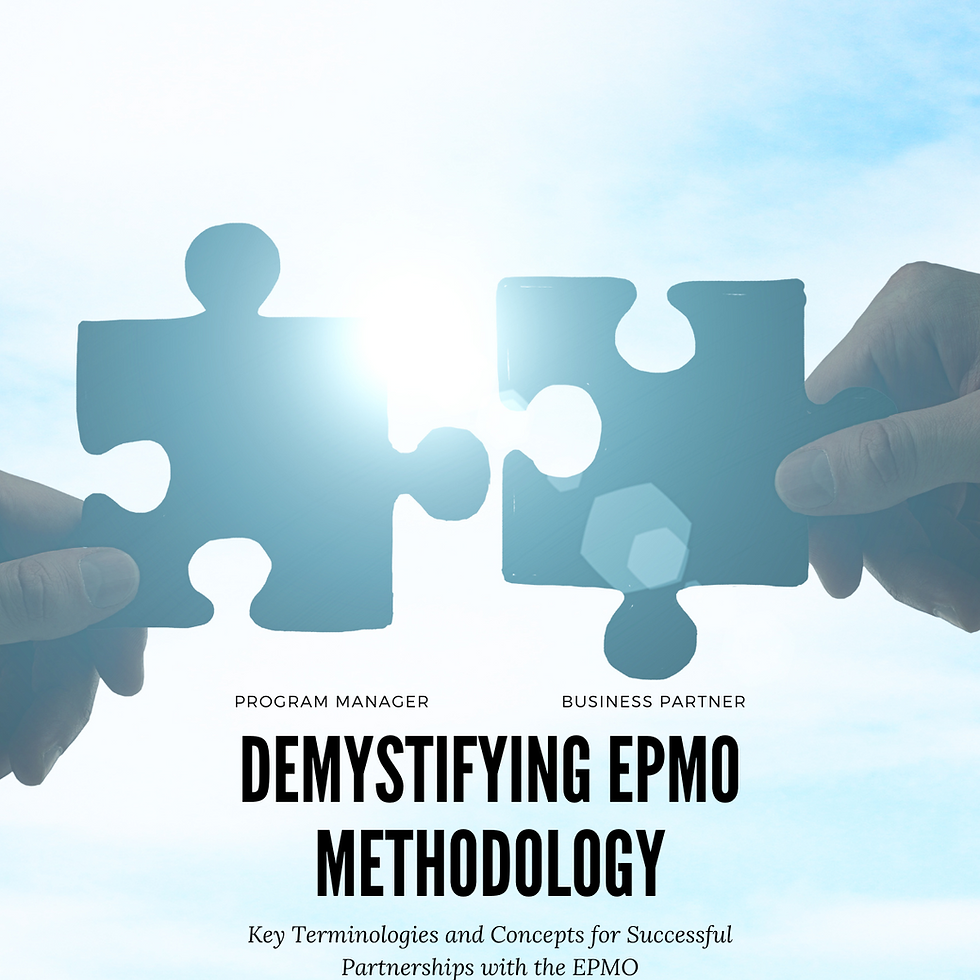Unveiling the EPMO: Aligning Projects with Business Goals
- Kimberly Bortz
- Jun 6, 2023
- 2 min read
Updated: Jul 6, 2023

Welcome to the world of enterprise-wide strategic alignment, where business goals and objectives are woven seamlessly into the fabric of project management, effectively driving your organization to the zenith of success. This realm of strategic alignment is facilitated by an increasingly significant entity in organizations - the Enterprise Program Management Office (EPMO). In this blog post, we will explore the vision, mission, and role of the EPMO in sculpting an organization's success story.
The EPMO: A Visionary Beacon:
An EPMO is not just a governing body or a project supervisory unit. It is the guiding light, the visionary beacon that ensures the alignment of program goals with an organization's strategic objectives. The vision of an EPMO extends beyond individual projects, embracing the holistic panorama of the organization. It provides a strategic view, working towards creating an environment where program management enhances business value and propels business growth.
The Mission of EPMO: Navigating the Sea of Programs:
The mission of an EPMO transcends the traditional boundaries of managing individual project timelines, scope, and budget. It creates a standardized and streamlined program management process across the organization, fostering a culture of best practices and continuous improvement. Through effective collaboration and communication, the EPMO ensures the right strategic programs are executed correctly, assuring maximum value for the organization.
EPMO: The Role that Transforms:
The EPMO plays a transformative role in an organization. It navigates the organization through the sea of projects, aligning them with business goals and objectives and facilitating informed decision-making.
1. Strategic Alignment: An EPMO ensures that all projects align with the organization's strategic objectives. It is instrumental in selecting, managing, and prioritizing projects with the highest value. These individual projects are aligned with programs that match the organization's strategy and portfolios that align with how the organization is managed.
2. Standardization and Efficiency: By creating a standardized set of practices and processes, the EPMO ensures efficiency and uniformity across all programs. This promotes a culture of best practices, boosts productivity, and reduces risks and delays.
3. Resource Optimization: EPMO ensures optimal resource allocation and utilization across programs. This leads to reduced costs, improved efficiency, and maximum value delivery.
4. Performance Measurement: The EPMO provides crucial insights into program performance through continuous monitoring and evaluation. It facilitates informed decision-making and allows timely course corrections when needed.
5. Change Management: The EPMO helps organizations manage change effectively in a rapidly evolving business landscape. It ensures smooth transitions, minimizes resistance, and navigates the organization toward its strategic goals.
In Conclusion:
The EPMO embodies a paradigm shift in program management, moving from a purely tactical view to a strategic, organization-wide perspective. By aligning programs with business objectives, fostering a culture of best practices, and continuously monitoring project performance, the EPMO becomes an invaluable asset in an organization's quest for favorable results. When the vision, mission, and role of the EPMO are fully understood and integrated, your organization will be well on its path to strategic success.
.png)



Comments